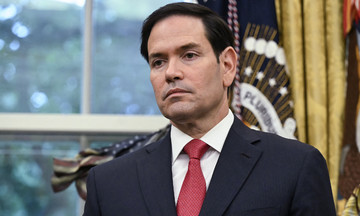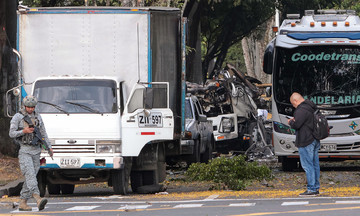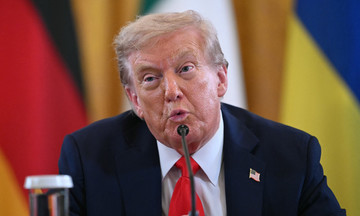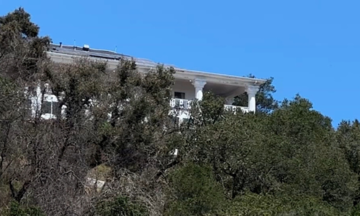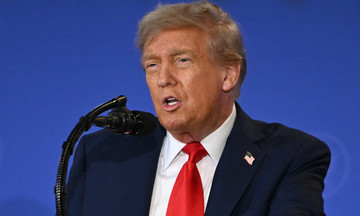After months of stalemate, Russian forces recently made significant progress by penetrating Ukraine's defenses north of the stronghold of Pokrovsk, Donetsk province, approaching the Dobropillia-Kramatorsk highway. This is a crucial supply route for the Ukrainian army, used regularly until at least mid-July.
On the map, Russia's advance appears as small gains, but behind it lies a tactic Moscow is increasingly employing. Instead of launching large-scale offensives, Russian forces have shifted to "inching" forward. They deploy small groups of soldiers to infiltrate Ukrainian lines undetected, regroup into larger formations, and then launch attacks from the rear.
This process is repeated, allowing Russia to wear down opposing forces and gain as much territory as possible, giving them leverage in any negotiations aimed at ending the Ukraine conflict.
 |
Ukrainian soldiers at a guard post in Pokrovsk, 10/7. Photo: *Reuters* |
Donetsk, along with Luhansk, forms the crucial industrial Donbas region in eastern Ukraine. These are two of the 4 provinces Russia claimed to annex in late 2022. Russia has complete control of Luhansk province, but has not been able to push Ukrainian forces out of about one-third of the area they are defending in Donetsk province.
One of Russia's targets in Donetsk is Pokrovsk, a key logistics hub and Ukrainian stronghold. But Russia's advance has faced obstacles due to Ukraine's geographical advantage. Both sides have deployed a large number of drones for surveillance, making any large-scale troop movements easily detectable and vulnerable to interception.
To tighten the siege of Pokrovsk, Russia began intensifying its inching tactic in early August in an area about 20 km northeast of the city, according to Deep State, an analytical group linked to the Ukrainian Ministry of Defense.
From this position, Russian forces launched small advances westward and northward. Small groups of Russian soldiers, usually consisting of 2-4 individuals, exploited gaps in Ukraine's defenses near the city of Dobropillia to infiltrate.
"They gradually gather into groups of 40 soldiers. Russian forces on the front line will attack Ukrainian positions head-on, while this group of 40 soldiers attacks from behind," a Ukrainian lieutenant colonel explained to *Le Monde*.
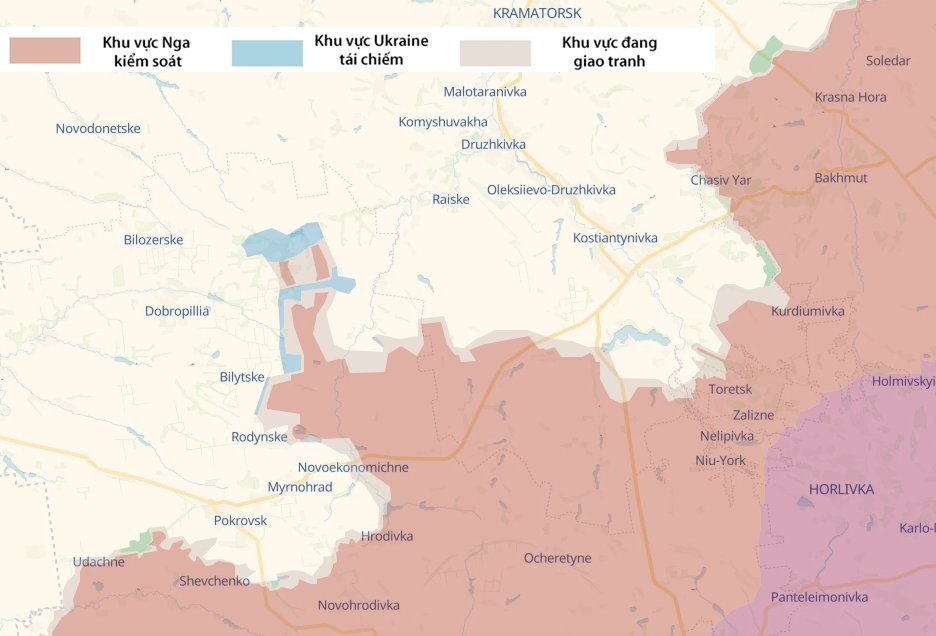 |
Overview of the Pokrovsk front published by Ukrainian analytical groups on 17/8. Graphics: *Deep State* |
Sergeant Vitalii Piasetskyi of the 93rd Mechanized Brigade of the Ukrainian army, operating in the area between Kramatorsk and Dobropillia, said his brigade detected and neutralized many infiltrating Russian soldiers, but some groups still slipped through.
"Russia wants to gain as much territory as possible when peace negotiations and political agreements begin to emerge," said Colonel Dmytro Palisa, commander of Ukraine's 33rd Mechanized Brigade, stationed near Pokrovsk. "They attack quickly, as far as they can, then stop and dig in. They keep doing that, without any deep strategic meaning."
By 11/8, the inching tactic had helped the Russian army advance about 13 km, controlling two areas stretching out like "rabbit ears" east of Dobropillia. Ukrainian Commander Oleksandr Syrsky confirmed on 12/8 that "infiltration units" had breached some Ukrainian positions, and Kyiv was deploying forces to respond.
Experts believe this situation is concerning, even alarming, for Ukraine, especially as US President Donald Trump has suggested that a peace agreement with Russia could involve "territorial exchanges."
"If Ukraine doesn't quickly regain control, and Russian forces consolidate, transforming from inching to a true breakthrough, this could be a turning point in the conflict," said Pasi Paroinen, an expert from the Finland-based Black Bird Group, a conflict research group.
Konrad Muzyka, a military analyst in Poland, believes that if the current situation continues, the fall of Pokrovsk is "only a matter of time."
Losing Pokrovsk would expose the southern flank of the Ukrainian stronghold of Chasov Yar and the neighboring cities of Kramatorsk and Slavyansk. Controlling Pokrovsk would help Russia weaken Ukraine's defenses and supply lines in Donetsk, bringing them closer to their goal of controlling the entire province.
 |
Ukrainian army commander Oleksandr Syrsky in the Sumy region in 10/2024. Photo: *AFP* |
A Ukrainian military spokesperson dismissed assessments that Russian forces had made a major breakthrough in Pokrovsk. The Ukrainian National Guard's 1st Brigade, along with the 33rd and 59th Brigades, have been deployed to the front to reinforce defenses. A soldier from the 1st Brigade noted that Russian attacks increased after recent peace talks ended.
Deep State's map on 17/8 shows that Ukrainian forces have cut off the "rabbit ears" from the rest of the area Russia controls, meaning that groups of Moscow's soldiers are trapped inside Kyiv's lines.
The Ukrainian General Staff reported that Russia had "suffered heavy losses" in the area, with 910 soldiers killed, 335 wounded, and 37 captured. The Russian Ministry of Defense did not comment on this information but said it had "gained more advantageous positions."
Experts warn that this development could lead to new vulnerabilities in Ukraine's defenses in Donetsk and highlight Kyiv's most serious problem: a lack of manpower to hold defensive positions.
"Russia is trying to control as much territory in Donetsk as possible. And this negatively impacts Ukraine, as we will be forced to negotiate from a weaker position," said Colonel Palisa.
Nhu Tam (*Kyiv Independent, Reuters, Le Monde*)




